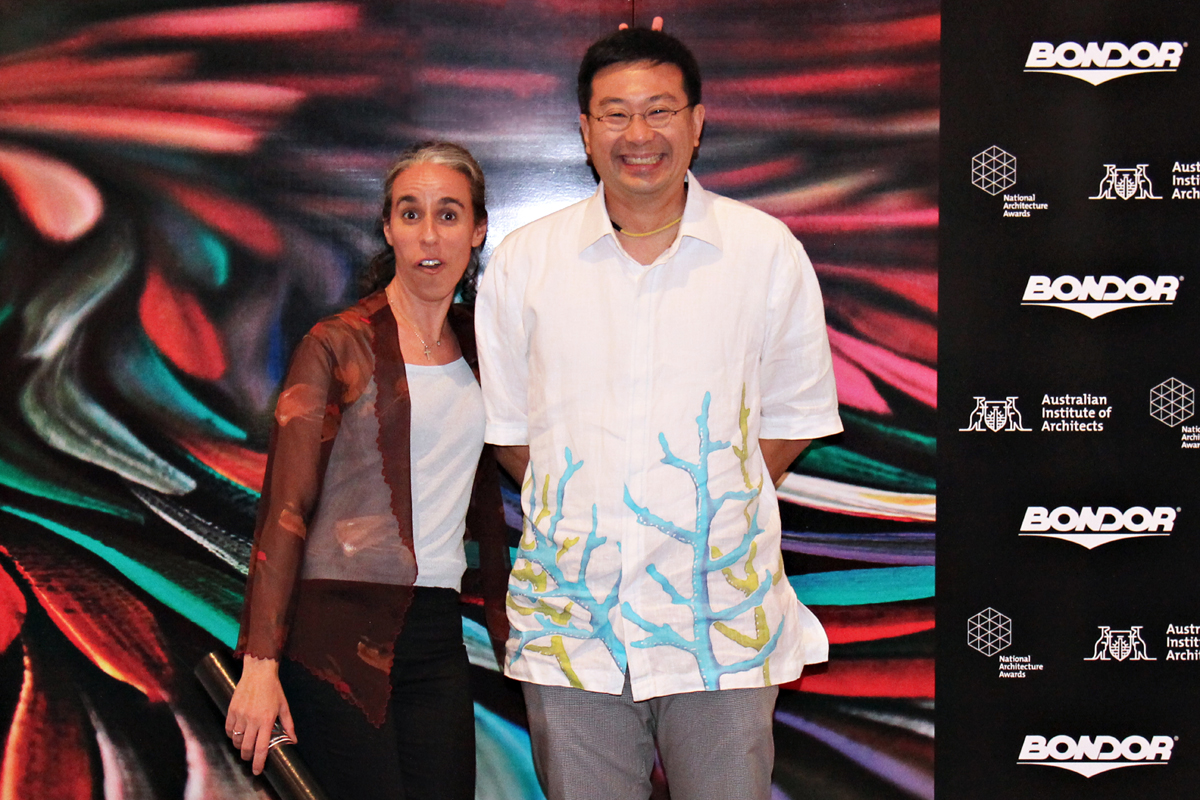KUALA LUMPUR, Feb 13 — Malaysia-born architect Ken Yeh has much to smile about. His Sydney-based firm, Marra + Yeh Architects, was awarded the International Architecture Award 2014 in Darwin, beating out a hotel in Singapore, a condominium in Bangkok and an office in New Zealand.
His winning project, Shelter@Rainforest, is a small building located in the remote highland jungle of Sabah, designed to provide shelter for the staff of a private regrowth forestry company.
Shelter@Rainforest is based on a low-cost, self- sufficient and smart design, and blends in with its natural and beautiful surroundings.
Malay Mail Online talks to Yeh about his approach to designing buildings and his opinion of what green architecture really means.

How do you feel about winning the International Architecture Award?
The feeling was one of shock as it was totally unexpected. We were up against some very good buildings by our esteemed peers and a lot of these buildings had far larger budgets. It was an important lesson as architecture, like all the important things in life, is about quality and not quantity.
What’s your approach to this kind of work?
Our approach is the same whether we are doing projects in North America, the Antipodes or Tropical Asia. We do a lot of upfront research as to the context and the depth of the place. We want to understand what makes a place tick; how the people want to live in that particular place; what does the environment do to the place; what are the microclimates at work within the site?
We often collaborate with people in different fields because their knowledge informs our work. For example, we had a botanist as well as a cultural anthropologist in our Shelter@Rainforest team.
How did your interest in sustainability and environmental stewardship as hallmarks of architecture emerge?
I think my Dad has to take some credit for this. I grew up idyllically in Ipoh. Our house was filled with animals — at least five dogs at a time, usually up to 10 cats, an aviary with 200 birds, multiple fish tanks, and fishponds.

We also had a farm in Tanjung Rambutan where my relatives experimented on being farmers but were hobbyists at best, as well as a fish and shrimp farm outside Kampar. I also had an uncle who would let us tag along when he took Japanese visitors into the jungles of Cameron Highlands to catch butterflies. I was always surrounded by Nature and this has instilled in me a lifelong interest in Nature and biology.
Looking back, what was your experience as an architecture student?
It was most enlightening. I come from a family whose mainstay was in property development. I naïvely thought I knew something about architecture as I had already worked at the family business for a year. In fact, I did not and when I came to this realization, I spent a summer reading up on everything I could at the architecture library at my university, the University of Texas at Austin.
I also did half an MBA while pursuing my architecture degree. I was introduced to the work of J.K. Galbraith, especially the concept of inequality in society through his son James who is still teaching at Austin, Texas. The time I had as a student to contemplate in libraries as well as the very high quality professors I had have been most influential in my pursuits as an architect.
Given the changing architectural scene and client demands, how do you see your role as an architect?
Architecture is about the long term; buildings are with us for decades or even centuries and eat up a lot of resources. Given this fundamental truth, my role as an architect is not to fall into the trap of wildly oscillating fashion statements but instead be about making inspiring spaces for the mental and physiological well-being of its users and anyone who comes into contact with it.

What are your views on the current state of green architecture?
The term green architecture has been hijacked as a marketing tool. We have a word for it in the profession and that is “greenwash.” It is most unfortunate as the issue of building efficiently is such a big piece of the puzzle in helping reduce climate change given buildings are one of the largest energy consumers. Only a handful of serious ecological architecture is produced annually worldwide and this is alright as innovation cannot happen in every building. What makes it cynical is when property developers adopt the green branding without truly understanding what it means and sell it off to the general public as a veil of competency.
What inspires you today?
My wife continues to inspire me; we run the practice together and every day, she still amazes me.























